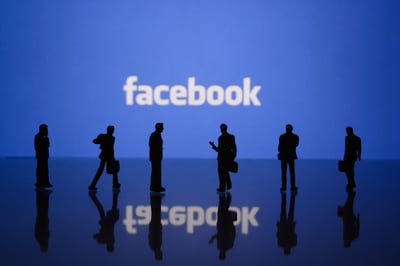July 24, 2024
 by Kamaljeet Kalsi / July 24, 2024
by Kamaljeet Kalsi / July 24, 2024

Amazon Prime Day has come and gone again.
Love it or hate it, you can’t ignore it—especially if you're an advertiser.
Last year, sellers spent 14% of their Prime Day revenues on Amazon ads, yet many saw their profit margins thin. This begs the question: how can advertisers maximize their ad spend returns in Amazon’s marketplace monopoly?
To uncover insights, we interviewed Regina Ye, CEO and co-founder of Topsort, an AI-first ad infrastructure platform built for the post-cookie world. Regina is a serial entrepreneur, software engineer, and former e-commerce vendor who knows firsthand the challenges of retail and performance-based marketing.
In this interview, we explore the dynamics of Amazon Prime Day, uncover advertising strategies, hear contrarian perspectives, and dive into the future of ad measurement.
This is part of G2’s Industry Insights series. For more content like this, subscribe to G2 Tea, a newsletter with SaaS-y news and entertainment.
Kamaljeet Kalsi: Why do you think Amazon Prime Day is such a profitable event for Amazon?
Regina Ye: Amazon was one of the first retailers in the US to launch a big event like Prime Day, giving them a first-mover advantage.
The scale of Amazon Prime Day today is enormous. For instance, in 2023, it was the biggest event in Amazon's history, with nearly $13 billion in sales over just two days. They sold approximately 375 million products during Prime Day 2023. The market coverage is also impressive—about 45% of US adults shopped during Prime Day last year.
The exclusivity of deals for Prime members and the sheer volume of traffic create significant momentum for vendors on Amazon, making it a highly anticipated and profitable event.
What’s the problem with Amazon Prime Day for advertisers? Are they seeing an ROI from participating?
Most advertisers view Amazon Prime Day as part of a long-term strategy to build their presence on Amazon, rather than an end goal. The competition is fierce because everyone wants attention on Prime Day.
Consumers have become savvy—they maintain in-app lists of items and know exactly when they want to purchase. Vendors only have a matter of seconds to grab their attention. This creates pressure to offer significant discounts, which can eat into margins. Due to high demand, the cost of ads also increases.
However, most brands see positive results if they have a well-executed strategy for the event.
What's one golden rule brands and advertisers must remember during high-tension events like Amazon Prime Day?
A big part of it is the preparation in the lead-up to the event, which is typically two weeks to a month ahead.
Ensuring inventories are in place, budgets are set, and campaigns are ready is crucial. Capturing momentum after the event is equally important.
Without proper preparation, it feels like any other day. However, with a solid plan both before and after, brands can have a highly successful Prime Day.
Additionally, this ties into data collection. It’s not just about marketing in the present but capturing the right data points to inform future strategies. By correlating this data, brands can enhance their approach for upcoming events like the holiday season, ensuring a more comprehensive and effective strategy.
Do you think advertisers should explore putting their ad spend into other marketplaces, instead of feeling pressured to participate in Amazon Prime Day?
Absolutely.
There are significant benefits to spreading ad spend across different retailers and marketplaces and testing various strategies. Amazon is dominant and has an excellent membership system, but other, more vertical-focused retailers and marketplaces might be better suited for specific product categories.
It always pays to try different retailers and see which ones work best for particular products. By diversifying, brands can find the ideal platforms that resonate most with their target audience and product type.
Example:
If you're in the hardware or electronics business, the ad spending approach depends on your results and average order value. Premium products may follow a different strategy than lower-cost items.
For new product launches, it's effective to enter as many retail channels as possible to reach a broad audience, similar to Prime Day events that quickly build product awareness.
However, if you're already a category leader, diversifying your channels is crucial to avoid over-reliance on Amazon. Hardware brands, for example, might benefit from participating in Best Buy’s special sales events like Best Buy Days.
Is it smarter to use Prime Day for audience growth and then diversify to other platforms for launches or reselling?
Amazon offers excellent sponsored listings and advertising options, which work particularly well on Prime Day for vendors focused on conversions and sales. If the strategy is to drive product sales, prepare well in advance, and execute effective ads on Prime Day. There will be significant traffic, conversions, and purchases.
However, some brands today may prefer to build their own direct-to-consumer (DTC) channels and not be confined to a single retailer.
For these brands, diversifying across various retail channels makes sense to build broader coverage and enhance brand awareness. By using different marketplaces, brands can reach new audiences and launch new products more effectively.
If you don’t want to put all your advertising eggs into the Amazon Prime Day basket, which platforms or strategies do you think are more profitable for acquiring new audiences?
This is a very nuanced question and depends on the brand's strategy. If a brand is focused on building its own brand awareness and a DTC model, having its own website and managing a comprehensive DTC channel offers many long-term benefits. The brand is not at the mercy of one platform.
In recent years, competition for Amazon has increased significantly.
Many retailers are adopting similar strategies, becoming more digital with well-optimized websites and comprehensive ad offerings. Platforms like Best Buy, Target, and Walmart all have their own ad networks and provide opportunities for diversification.
These platforms allow brands to impact sell-through rates and overall sales. Diversifying by entering multiple retail channels can prove beneficial, as these platforms also deal with high volumes and have loyal customer bases.
How can a marketplace make the advertising experience profitable for both the marketplace and advertisers? Is that even possible?
It always comes down to having a good product with an optimized listing.
Strong fundamentals are key—decent conversion and click-through rates make it safer to invest more in advertising. The advertising tools should be easy to use and measure, with transparent and clear reporting.
One of my favorite things about Amazon's ads is the ease of understanding the results, which also makes reporting easier. These tools help create a shrewd advertising strategy, allowing quick adjustments based on feedback and ensuring profitability. So, yes, it is still possible to make the advertising experience profitable.
On the flip side, while Amazon is a powerful advertising channel, its complex processes can intimidate new vendors or SMB sellers. From Colleen Aubrey’s keynote at Shoptalk 2024, I learned that one regret Amazon's original ad team had was their heavy reliance on keywords. This approach requires the use of both negative and positive keywords that adds unnecessary guesswork and manual tweaking. An intuitive, plug-and-play approach could yield better results. This reflects how the platform’s design is from a different era.
What do you think marketplaces like Walmart, Best Buy, Target, or Alibaba are doing better than what Amazon is doing? Do you think Amazon will maintain its leading position?
We can’t deny that Amazon is still the industry leader with the depth and breadth of features that are hard to beat.
They started ahead of everyone else, launching their project back in 2004. Over the years, they've gained extensive knowledge in the advertising space. However, Amazon’s marketplace dynamics are very competitive, with many sellers vying for attention.
Newer players can attract sellers by presenting a less competitive environment. In the long run, for Best Buy, Target, or Walmart to compete effectively with Amazon, especially in advertising—which is Amazon's primary profit driver—they need sophisticated technology.
To retain its leading position, Amazon must excel in areas like auctions, relevance, machine learning, and reporting. While launching new offerings can generate initial excitement, scaling these advertising systems effectively is the real challenge these platforms face.
They need to increase their technological capabilities to stay competitive.
What would you say to marketplaces who are skeptical about adding an advertising or retail media platform into their offering? Should they be worried it could negatively affect the shopping experience?
I understand the skepticism, as it's a growing market with a lot of hype and aggressive numbers, making it a noisy space. It becomes challenging to distinguish between genuine technology and copycats.
However, it's crucial to set things right from the outset, focusing on relevance.
Don't create a parallel search engine; ensure ads don't work against search functions. While ads may bring in revenue, if they detract from the overall experience, it could lead to losses elsewhere and not contribute to overall growth.
We've heard stories of retailers stopping their ad programs due to cannibalization, but this is avoidable with proper measurement, relevance, and recommendations.
For instance, avoid irrelevant ads like car insurance ads when customers search for shoes. Robust analytics are also essential. Without a feedback loop to understand ROI, it becomes difficult to invest more.
Most importantly, this is a golden age for retail media, presenting an exciting opportunity. Many players are focused on making it easier to try and experiment with new technologies. These efforts open new avenues for retailers to compete with giants like Amazon.
How can brands ensure their SEO and advertising efforts are not canceling each other out?
It's essential to view the overall growth of the marketplace holistically rather than seeing ads and non-ads as separate entities.
When they are treated as competing projects, they end up fighting for the same resources, which can be counterproductive. Internally, our team at Topsort has invested substantial time and effort to inject this cohesive approach as an integral part of our product strategy.
Sometimes, trade-offs are necessary to preserve the overall health and growth of the marketplace. For instance, if an ad is of poor quality but is paid for, it might be better not to show it, as this decision can benefit the marketplace's overall revenue in the long run.
How can retailers leverage first-party data for ad personalization to gain a competitive edge in the cookieless future?
There are several options for leveraging first-party data.
Some market players use customer data platforms (CDPs) or maintain detailed email lists to keep track of their core customers and audiences. Another recommendation is to use a solid cleanroom product if sophisticated audience data is available. This enables collaboration and data sharing within the partnership ecosystem, allowing for more effective data utilization.
However, it's also worth considering a contrarian view: retail media is still in its early stages, and the power of search on retailers is substantial.
When consumers are on a platform like Sephora searching for sunscreen, the shopper intent is already very high. In such cases, personalization isn't always necessary for good campaign results—it can be seen more as a secondary optimization rather than a necessity to get started.
How can advertisers harness the power of reviews to strengthen their advertising strategy?
Reviews are among the top factors consumers consider before buying anything, often ranked in the top three. On the product detail page (PDP), reviews are frequently the most clicked and the top source of conversions.
Customers heavily rely on reviews when looking at collections, making them a crucial element of the purchasing decision. Reviews also provide an excellent opportunity to build a sense of community.
Many brands are already doing this by using reviews as a cornerstone of their consumer content strategy and using user-generated content (UGC). This approach tends to be far more powerful than anything a marketer could say about their own products.
Do publishers benefit when retailers integrate product listings and advertisements into their content to stay top-of-mind with consumers?
Currently, these two worlds are somewhat disjointed.
It would be much better if they were connected. It can be challenging for retailers or advertisers to understand how much sales activity results from articles in publications like the New York Times or Vogue.
The attribution is often broken.
Today, this is usually done with cookies or privacy-focused tracking approaches. We're working on cleanroom technology that could help bridge this gap, as are others in the market. Combining these pieces to get a good view of the customer journey would be very interesting.
Right now, these functions are mostly considered separate and are typically owned by separate teams within companies, such as marketing and seller relationship teams.
How can the advertising strategies used for Amazon Prime Day be adapted for sales at Walmart, Target, and Best Buy?
Many of these retailers have already adopted similar practices by hosting their own customer acquisition events. These events are effective for building traffic and momentum. However, the challenge for these retailers is to offer a unique value proposition that distinguishes them from Amazon and other competitors.
It's not just about replicating Amazon's tactics but also about understanding what sets a brand apart. Additionally, having robust reporting is crucial to justify the ROI for sellers and advertisers. This includes ensuring the accuracy of performance metrics and using insights to fine-tune strategies.
How can marketers report better ROI?
To report better ROI, it's essential to ensure there are APIs for reporting that can provide mostly real-time data feedback. This allows visibility into impressions, clicks, and purchases as they happen. Additionally, most brands at a certain scale should have their own data lake and reporting tools to centralize all this information.
One challenge we often hear from brands investing in multiple channels is the inconsistency in how different platforms measure impressions, clicks, and purchases. This leads to confusion about whether brands are comparing apples to apples. Having a unified measurement system is crucial for building trust in reporting.
Lorem ipsum dolor sit amet, consectetur adipiscing elit. In molestie dolor lacinia sem ultrices fringilla. Donec neque ipsum, tincidunt non tristique sed, imperdiet et nisi.
How do you foresee the challenge of inconsistent data reporting across different platforms being solved in the near future?
There are several players trying to solve this issue.
Companies like Skai and Pacvue, among others, have developed tools to better understand and combine metrics from different platforms. However, the challenge becomes more pronounced down-market with different retailers, especially those on a smaller scale.
One solution is having a universal catalog to standardize stock-keeping units (SKUs) across marketplaces, similar to how Amazon has successfully implemented its AWS Certificate Manager (ACM) system. Our product also aims to address these challenges by providing a unified measurement approach for retail media networks, making it easier to standardize reporting.
The issue of inconsistent data reporting is a necessary challenge given the explosion of retail media networks. Without a standardized system, it becomes extremely difficult to compare and understand the entire landscape accurately.
How do you see the role of technology evolving in the marketing and advertising space, especially in terms of transforming from an art to a science?
I believe this space is undergoing a significant transformation—from what was once considered the Wild West, where everyone was just trying things out, to a more scientific approach focused on scalability and measurement.
Over the last 6 to 7 years, we've observed leading players initiating this shift. Now, over half of the top 10 U.S. retail media networks are contemplating upgrading from legacy platforms and deciding whether to build in-house solutions or opt for further customization.
These companies are now entering the 2.0 or 3.0 phase, with a future-first focus on strategies to stay ahead of the curve. Technology plays a crucial role in this evolution, making marketing and advertising more data-driven and scalable.
What product optimization tips can boost advertising conversions and brand awareness?
It depends on the specific products brands are pushing.
For new product launches, events like Prime Day are excellent for building credibility with a high volume of reviews and offering incentives for reviews. UGC is extremely effective in describing products authentically.
Amazon offers video ads, and many other retailers and marketplaces now offer this format as well. Video ads are particularly useful for new and niche products requiring detailed explanations or demonstrations, helping to build brand awareness.
Additionally, it's essential to balance long-term brand awareness with advertising conversions.
After major events like Prime Day, maintain visibility to ensure people remember the brand. Small tactics like setting up a strong online presence, including memorable items in the shipping, such as samples or reward cards, can make a significant impact. Amazon is quite flexible regarding what brands can include in the product packaging, allowing them to enhance the customer experience and create a viral loop.
From a contrarian perspective, what optimization tips can you offer for platforms other than Amazon?
Amazon can be somewhat rigid and limiting unless brands invest more in custom branding and enterprise assets. Some platforms are more user-friendly for generating content. It's often more effective to use Amazon primarily for conversions while building and owning brand awareness on other platforms.
Distribute high-quality content across various channels, and once it's evident what’s working, leverage Amazon ads to drive exposure. Continuously experiment with different types of content to see what resonates most with the audience.
Can you build a lot of momentum on Amazon and successfully follow the same on other platforms to lower the cost of acquisition?
It's a bit tricky. Amazon is a very strong platform with a well-established brand. As a vendor trying to build their brand on Amazon, they either have an external brand presence and use Amazon for sales or struggle to build brand recognition solely on Amazon.
Many sellers find success in driving purchases and conversions on Amazon but often face challenges replicating that success elsewhere.
If Amazon changes its rules or policies, it can be difficult to maintain momentum on other platforms. Therefore, it's more effective to build the brand independently and use Amazon primarily as a distribution and conversion channel.
If you enjoyed this insightful conversation, subscribe to the G2 Tea newsletter for the latest tech and marketing thought leadership.
Follow Regina Ye on LinkedIn and learn more about the future of retail media and advertising.
Edited by Sinchana Mistry
Kamaljeet Kalsi is Sr. Editorial Content Specialist at G2. She brings 9 years of content creation, publishing, and marketing expertise to G2’s TechSignals and Industry Insights columns. She loves a good conversation around digital marketing, leadership, strategy, analytics, humanity, and animals. As an avid tea drinker, she believes ‘Chai-tea-latte’ is not an actual beverage and advocates for the same. When she is not busy creating content, you will find her contemplating life and listening to John Mayer.
Consumers’ attention spans are shorter than ever, so how do you get your business to stand out...
 by Emily Goorevich
by Emily Goorevich
With online shopping becoming more popular, there are endless ways to advertise your business...
 by Jess Kirkbride
by Jess Kirkbride
So you’re considering advertising on Facebook, huh? Well you've come to the right place.
 by Alexa Drake
by Alexa Drake
Consumers’ attention spans are shorter than ever, so how do you get your business to stand out...
 by Emily Goorevich
by Emily Goorevich
With online shopping becoming more popular, there are endless ways to advertise your business...
 by Jess Kirkbride
by Jess Kirkbride


